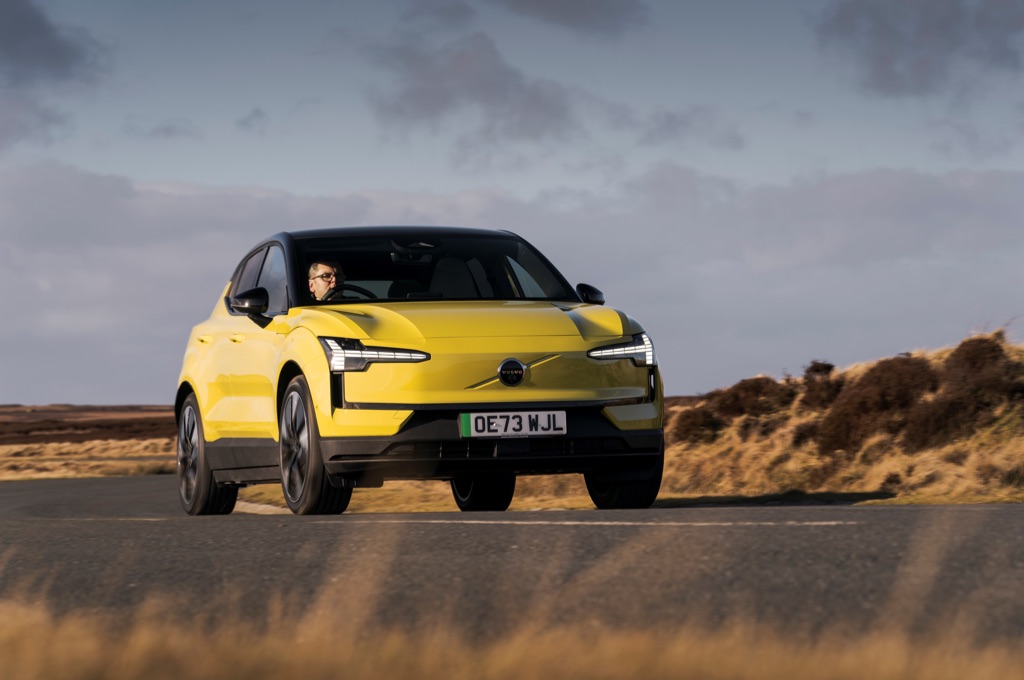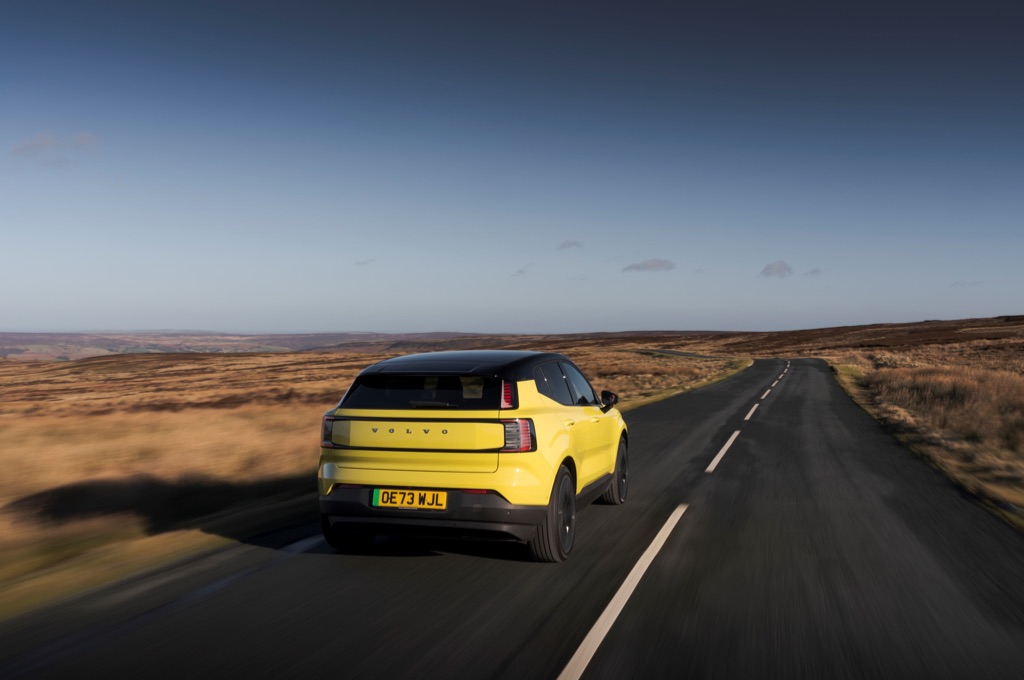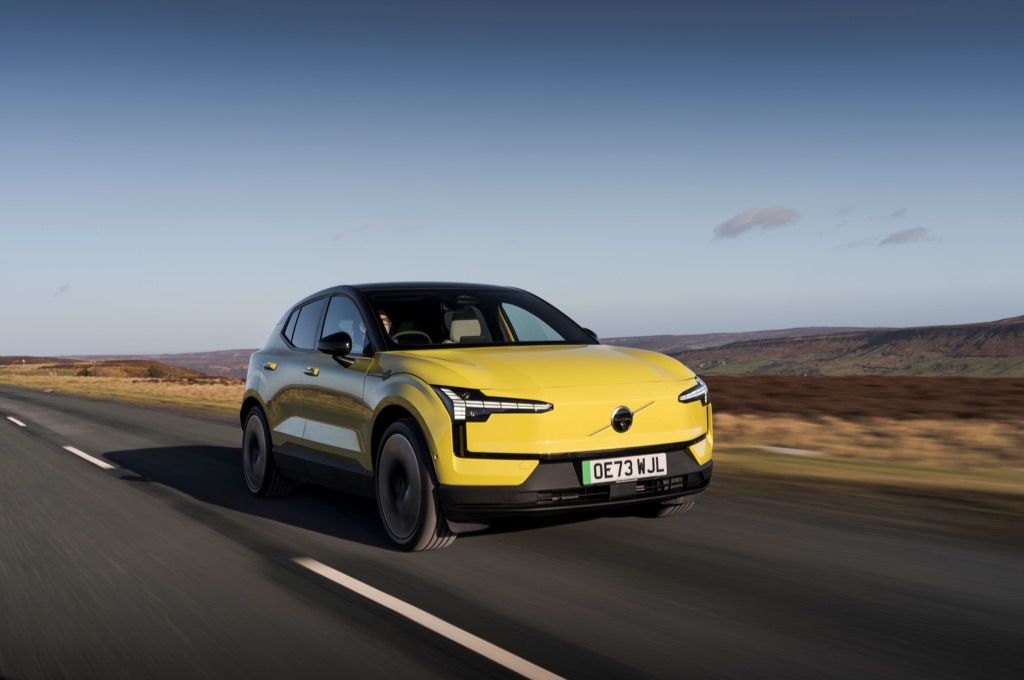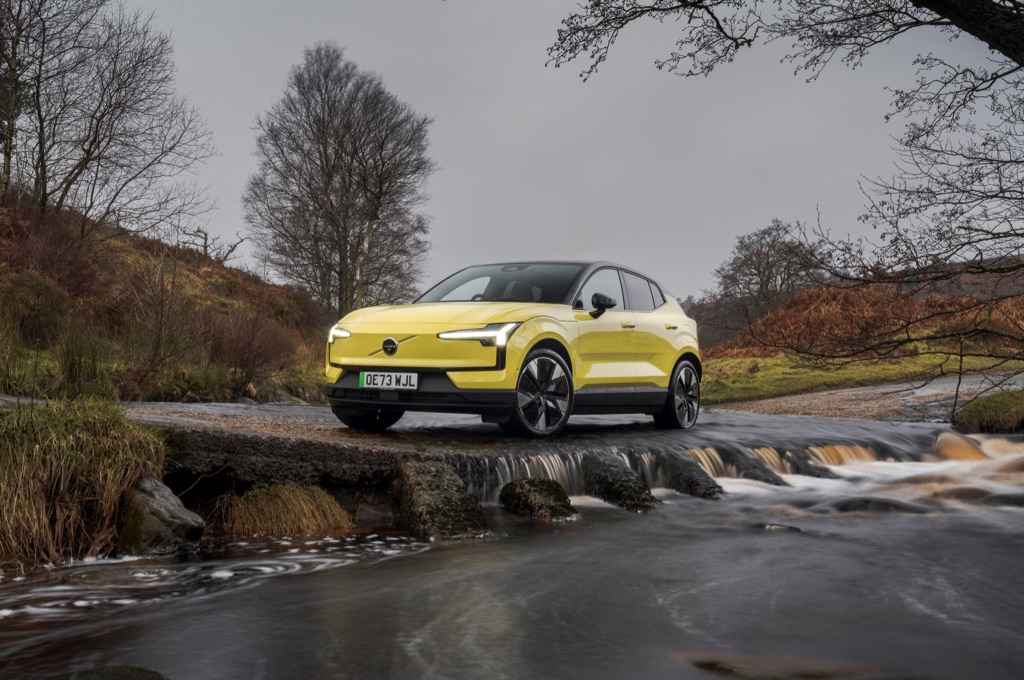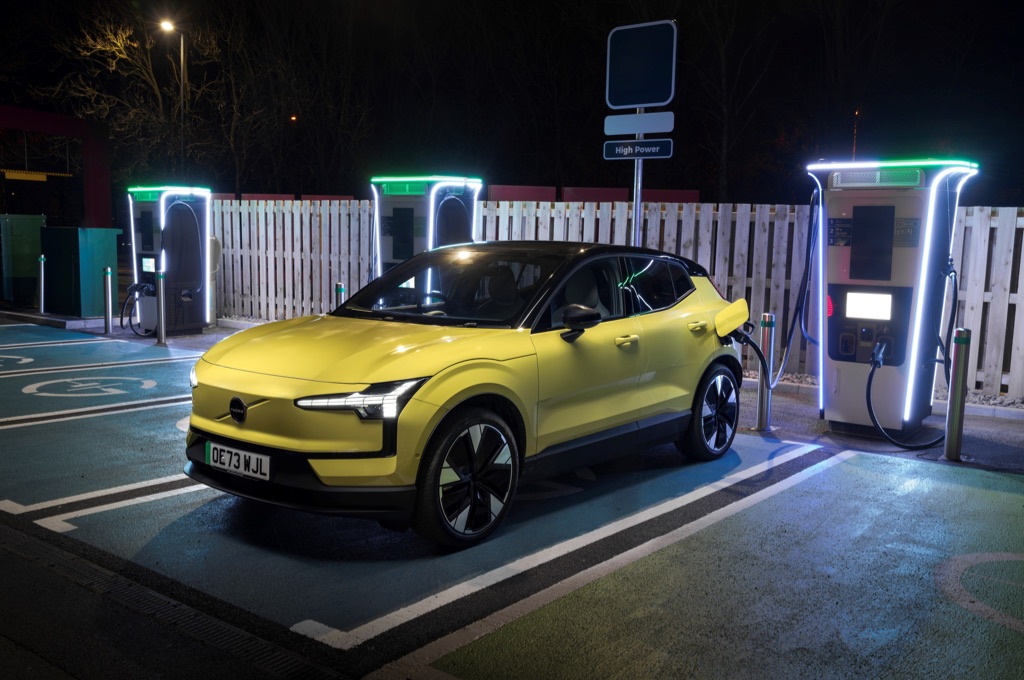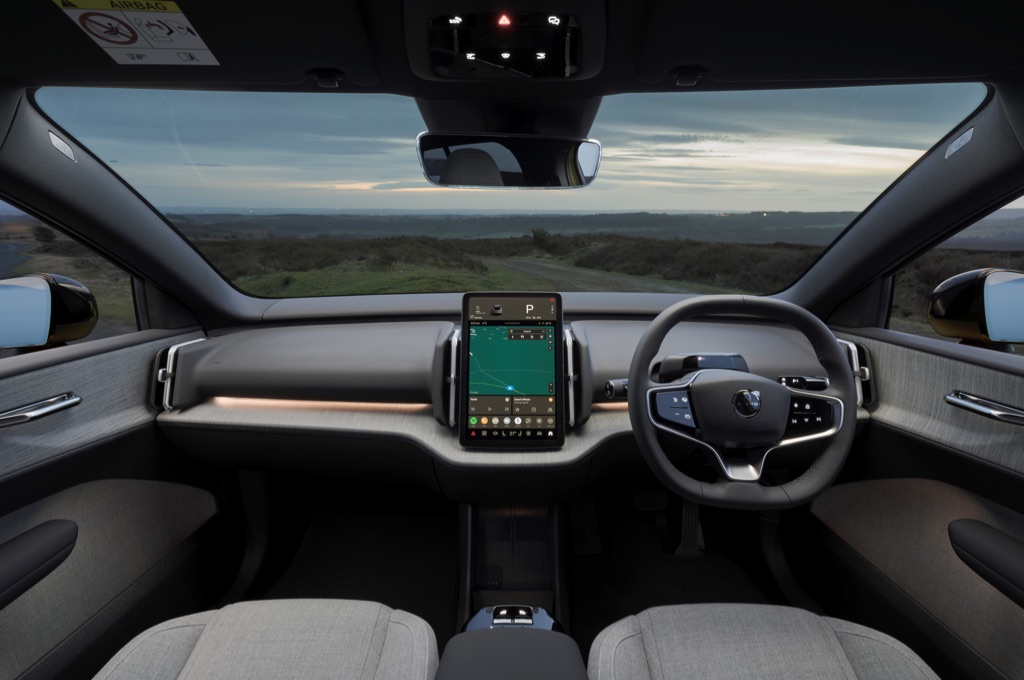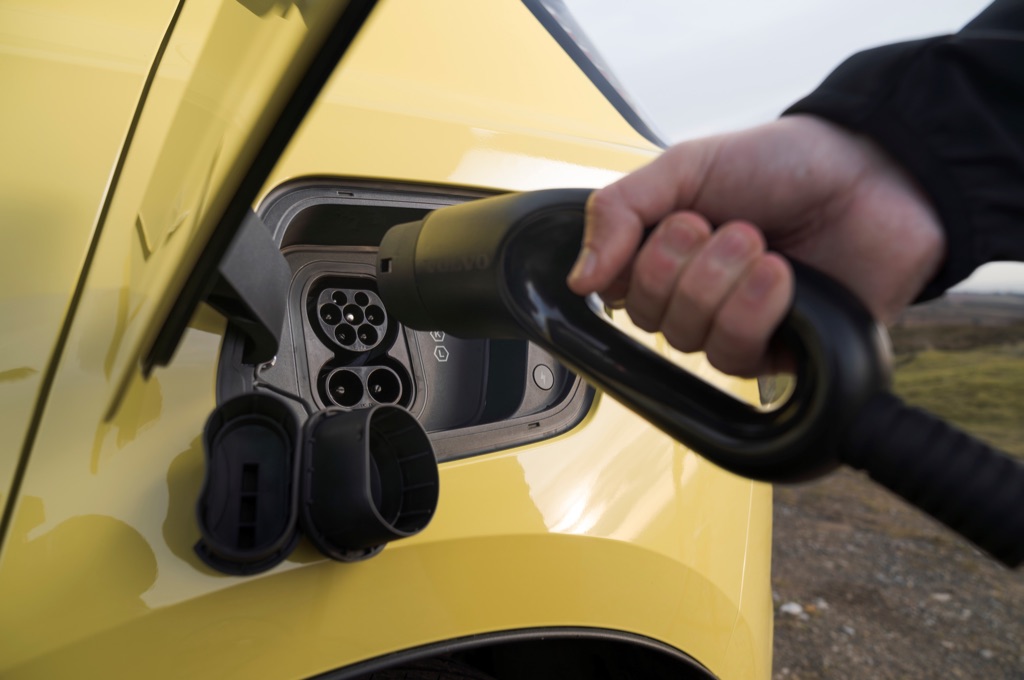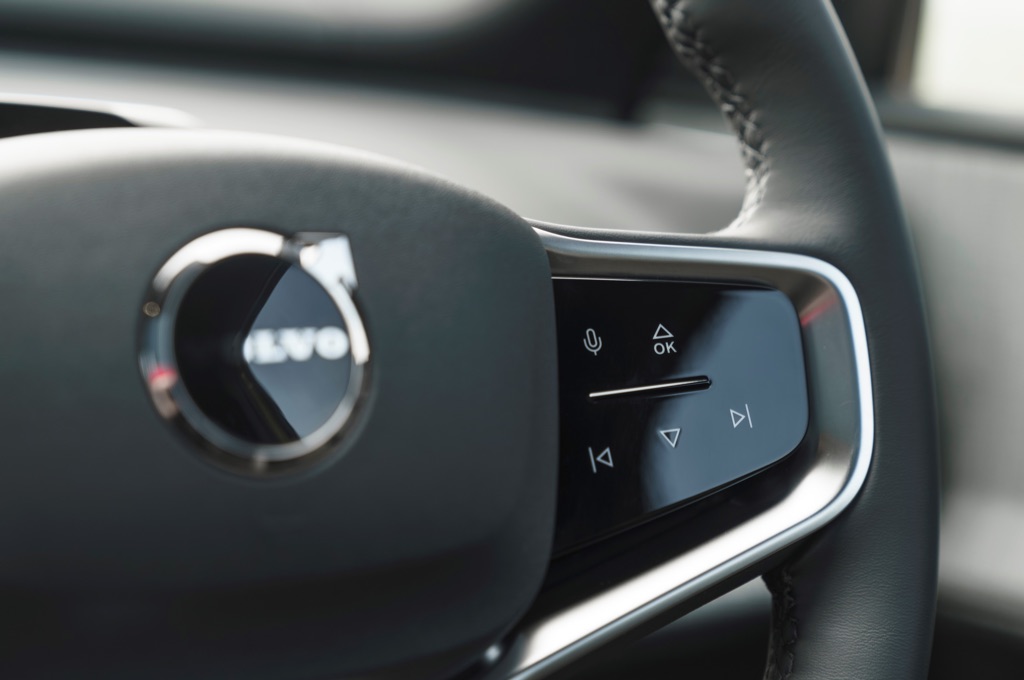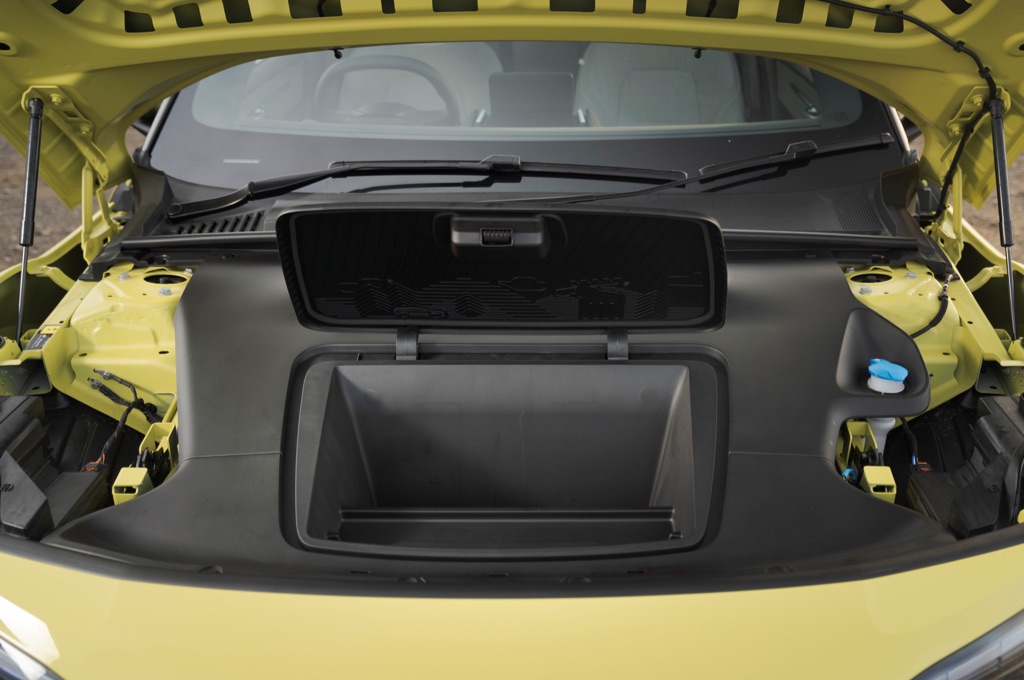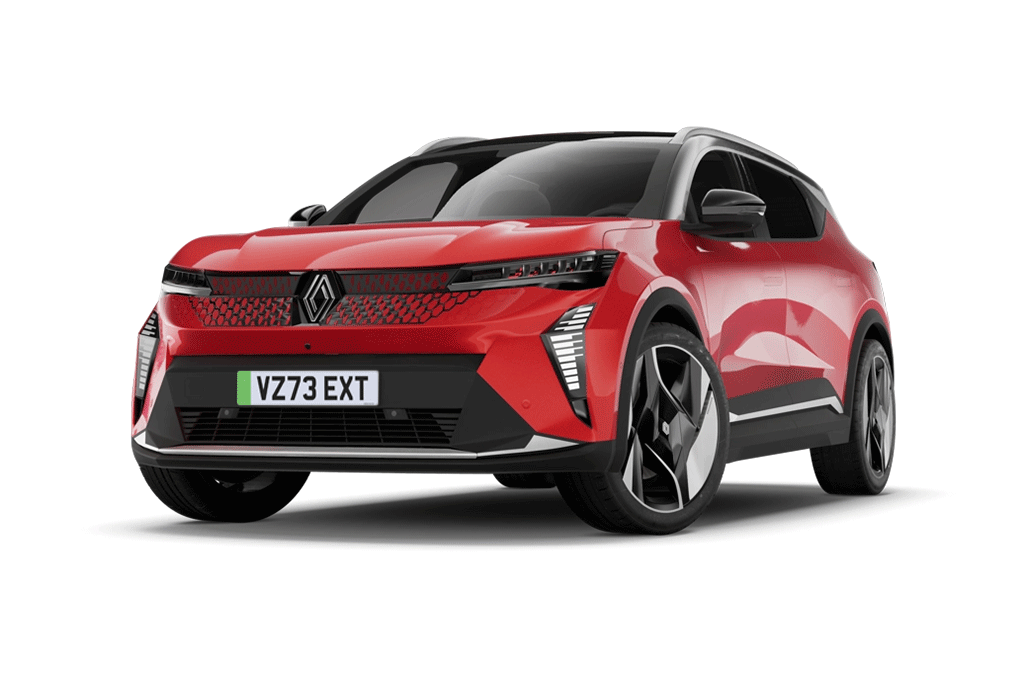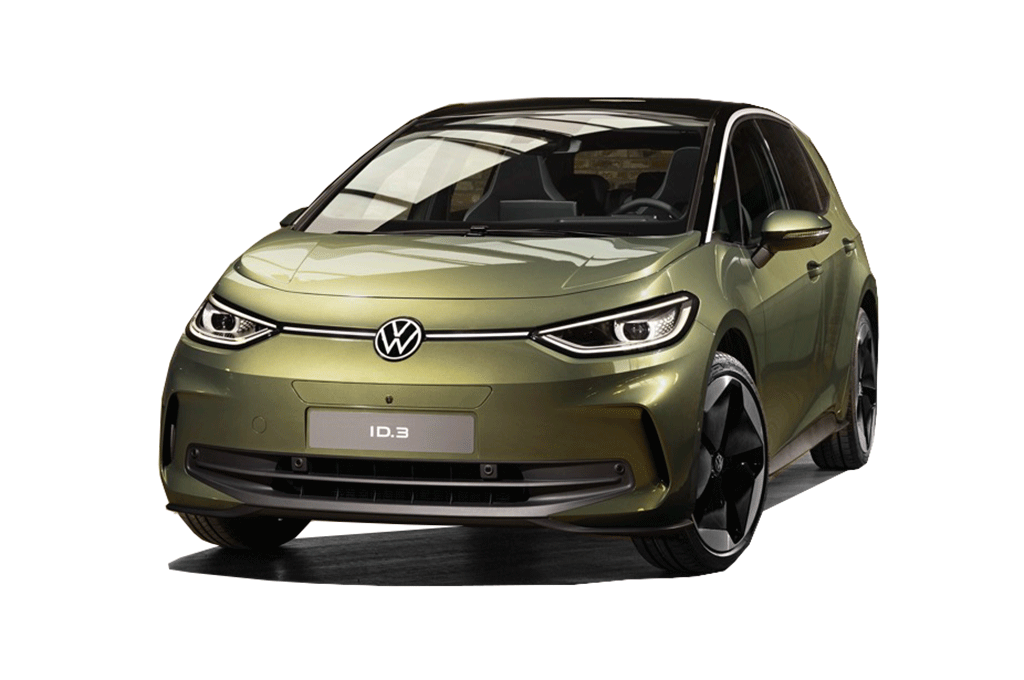From almost every angle, the EX30 is a handsome car. Although its SUV-ish silhouette is very recognisable, Volvo’s unmistakably ‘Scandi-chic’ styling cues are what really mark the EX30 out from alternatives like the Kia EV3, Volkswagen ID.3, Renault Scenic E-Tech, Smart #1, Jeep Avenger, Tesla Model 3 and Kia Niro EV.
The front end is dominated by Volvo’s trademark ‘Thor’s Hammer’ headlights that bleed neatly into smooth bumper and thin air intake. It’s beautifully simple and gives the whole car a clean, organic feel. Although we’d also point out that it’s closer to a hatchback than an SUV. At only 1.56m tall, the EX30 is actually the same height as the VW ID.3 – so not really an SUV, at all. Check out the Renault Scenic or MG ZS EV if you want something that feels a bit more high-rise, or the Tesla Model Y is roughly the same price on monthly finance.
Volvo has clearly sought to minimise visual clutter, but there are areas where this has gone too far. There is no secondary display ahead of the steering wheel, and there’s no head up display even as an option. That means the only road speed readout is tucked away in a corner of the central screen - which is far from ideal. Yes, Tesla owners have had to put up with this for years, but it seems an odd move for a brand that made its name as a safety pioneer.
In terms of interior spaciousness, it’s nice and roomy up front in the Volvo but the rear seats are more restrictive. With a six-footer in the front, there’s not a huge amount of legroom for those confined to the rear seats, and foot space under the front seats is also at a premium. If you’re considering the EX30 as family transport, be sure to check that the family can actually fit before taking the plunge.
Boot space is better than you'll get on a Vauxhall Mokka, if not as good as you'll enjoy on the Kia EV3 and Renault Scenic and you also get a small frunk for cable storage, but you’ll cram more stuff into the Kia Niro EV, VW ID.3 and Renault Scenic.
The EX30 range comes with three different options: a Single Motor version with 270bhp and a 49kWh battery, while the 270bhp Single Motor Extended and 424bhp Twin Motor Performance models both get a 64kWh battery.
The Twin Motor Performance version pairs the battery with four-wheel drive (the others are rear-wheel drive), giving it ludicrous 3.6 second 0-62 time.
The EX30 comes with two different battery options. The entry-level Single Motor EX30 uses a 49kWh lithium iron phosphate (LFP) battery. This LFP battery chemistry is cheaper and less resource-intensive to produce, but achieves fewer miles of range per kilogram of battery than the more efficient 69kWh lithium-ion NMC batteries used in the Extended Range Volvo EX30, and the majority of other electric cars.
Anyway, the crux of all of that geeky battery chat is that the Single Motor EX30 manages up to 209 miles official WLTP driving range, while the Extended Range Single Motor achieves 296 miles. The Twin Motor Performance gets the big battery pack, but thanks to its comically unnecessary straight-line pace, will do 280 miles to a charge in WLTP tests.
They’re all rather lovely to drive, but we actually favour the Single Motor models. The Performance version is hilariously quick, but Volvo is open about the fact that it’s not a hot hatch with the handling fizz to go with the 0-62mph of 3.6 seconds. We favour the more moderate and somehow more neatly balanced and organic-feeling rear-wheel drive versions.
Verdict
It’s fair to say that previous Volvo electric cars have been a little underwhelming. Expensive and compromised by the combustion-engine origins, they were eccentric choices for those who wanted a Volvo rather than an exceptional electric car.
The EX30 changes all that. Competitively priced, decently equipped and with all the design qualities we’ve come to expect from Volvo, it’s a thoroughly engaging product. It’s not perfect – the interior is a little too austere and the touchscreen-dependence will be too much for some, especially as it’s not always the most intuitive of screens to use. Even so, if you’re looking for a small, modern, well-priced electric SUV, it ticks a lot of boxes.
Like the Volvo EX30? Try these...












